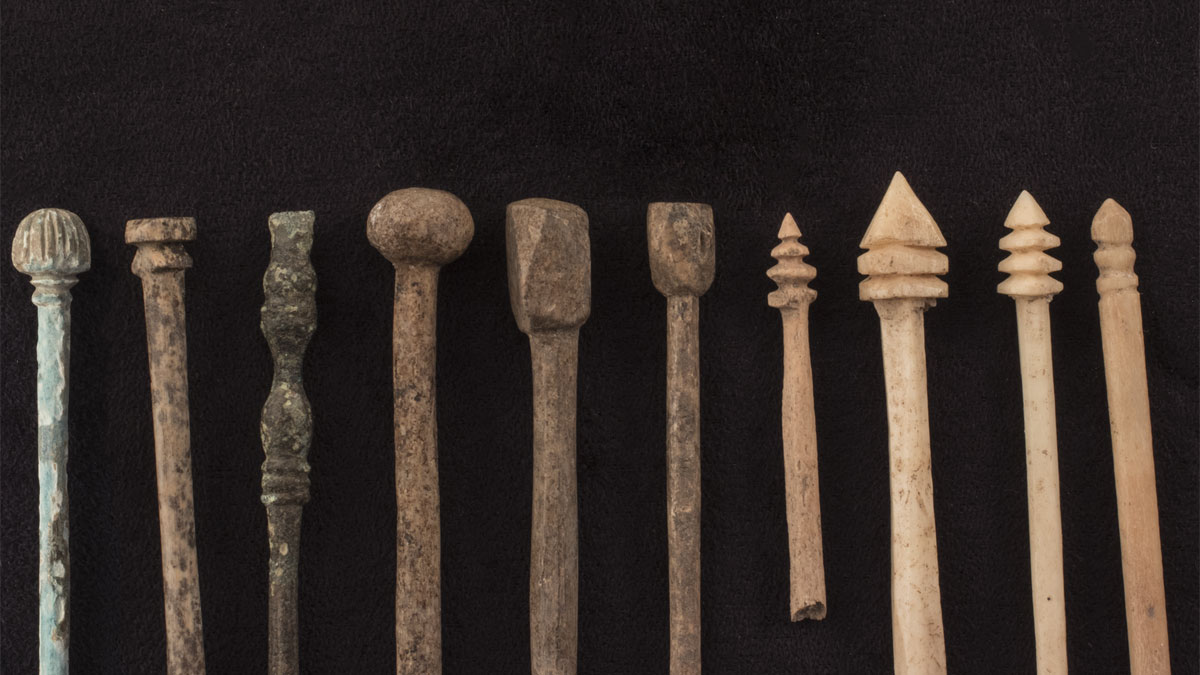What is OMP?
Objects, materials and people (OMP) are fundamental elements of archaeology. We explore the relationships between all three, investigating the lives of both people and things in the past.
Our research interests are cross-cultural, spanning the Palaeolithic to the present day to explore the theoretical concepts behind the meanings and value of materials and artefacts, the representation and display of objects in the contemporary world, and use scientific approaches to understand the production and deposition of objects, and taphonomic histories of material culture.
Our current research is focused on three central themes:
1. Cultural diversity and social identity
The agencies and social meanings of objects take centre stage in Duncan Garrow's Grave Goods project (AHRC), which provides the first major synthesis of burial practices in later prehistoric Britain. This research area also encompasses Hella Eckardt's innovative study into the role of personal objects in identity formation in Roman Britain, complementing an artefactual strand within Mike Fulford's Roman Rural Settlement project.
In particular, our research into the material culture of literacy has grown into a key sub-theme, encompassing Hella's empire-wide investigation of the social contexts of Roman inkwells (British Academy Mid-Career Fellowship) and Roger Matthews' innovative pXRF analysis of Mesopotamian clay bureaucratic artefacts. Roberta Gilchrist utilises object-based perspectives to inform understanding of the lived experience of medieval religion, while Alanna Cant's research places an emphasis on the role played by objects, aesthetics and material practices in the negotiation of indigenous identities in Mexico.
Key publications:
- Cant A. 2019. The Value of Aesthetics: Oaxacan Artisans in Global Economies of Culture. University of Texas Press: Austin
- Eckardt H. 2018. Writing and Power in the Roman world: literacies and material culture. Cambridge University Press: Cambridge. Read book
- Eckardt H. 2014. Objects and Identities: Roman Britain and the north-western provinces. Oxford University Press: Oxford. Read book
- Matthews R. and Richardson A. 2019. Cultic resilience and inter-city engagement at the dawn of urban history: protohistoric Mesopotamia and the 'city seals', 3200-2750 BC. World Archaeology, 50(5): 723-747. Read article
2. Object biography and networks
Object biography is explored variously in relation to prehistoric grave goods, Roman riverine deposits at Piercebridge (Leverhulme Trust), Gabor Thomas' research into the ritual deposition of early medieval plough technology, and Roberta Gilchrist's exploration of medieval religious objects.
Innovative research on material networks and flows is undertaken by John Creighton in relation to Roman coinage and Peter Bray on prehistoric and Roman metal recycling, harnessing the latest material science techniques applied to large legacy datasets.
Key publications:
- Bray P. 2019. Modelling Roman concepts of copper-alloy recycling and mutability: the chemical characterisation hypothesis and Roman Britain. In: Duckworth, C. and Wilson, A. (eds.) Recycling and reuse in the Roman Economy. Oxford Studies on the Roman Economy. Oxford University Press: Oxford (forthcoming).
- Creighton J. 2014. The supply and movement of Denarii in Roman Britain. Britannia, 45: 121-163. Read article
- Gilchrist R. 2019. Magic and archaeology: ritual residues and 'odd' deposits. In: Page S. and Rider C. (eds.) The Routledge History of Medieval Magic. Routledge: Oxford, pp. 383-401. Read chapter
- Thomas G., McDonnell G., Merkel J. and Marshall P. 2016. Technology, ritual and Anglo-Saxon agrarian production: the biography of a seventh-century century plough coulter from Lyminge, Kent. Antiquity, 90 (351): 742-758. Read article
3. Displaying objects in the contemporary world
Roger Matthews and Wendy Matthews are working closely with colleagues in Slemani Museum in Iraqi Kurdistan in order to design and construct a new display on early farmers and settled communities of Iraqi Kurdistan, drawing on their excavations at the Early Neolithic sites of Bestansur and Shimshara.
Alanna Cant's research considers how contemporary people's relationships to religious spaces change as churches become designated heritage sites, through her ethnographic research in Oaxaca, Mexico. This research was funded by a Marie Skłodowska-Curie grant from the European Union.
In the UK, Duncan Garrow and his team on the Grave Goods project are collaborating with the British Museum to explore the presentation of objects of death and memory.
Read more about Object Trails at the British Museum
Current research projects
- Piercebridge
- Lyminge: early medieval monasticism
- Grave goods: objects and death in later prehistoric Britain
- Roman Rural Settlement
